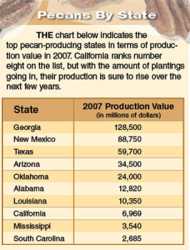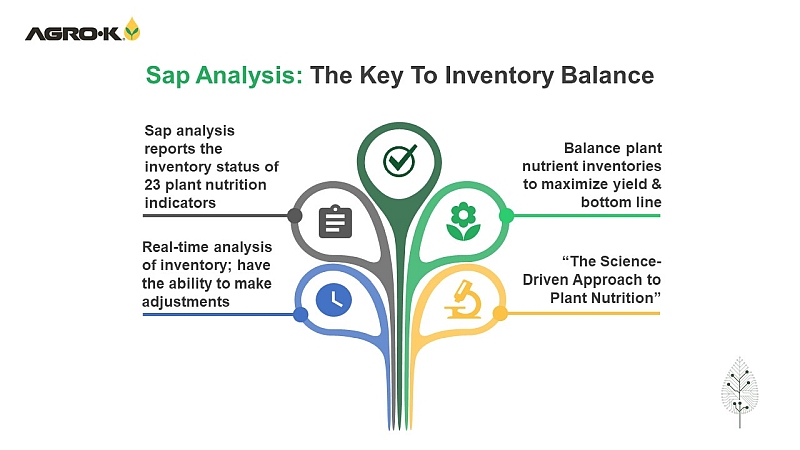Pecans May Be An Alternative Nut Crop In California

On the face of it, planting pecans in California seems downright, well, nutty. When the state has a veritable exclusive on such high-dollar nuts as almonds and walnuts — both of which continue to command attractive prices — why would growers be planting pecans? “They like marginal soils,” answers Gary Vance, the president of the California Pecan Growers Association. “They actually prefer low-class soils.”
Vance, who farms 110 acres of pecans in Corning, a couple hours north of Sacramento, freely admits most growers would opt for almonds or walnuts. But in some situations, pecans are a nice alternative. “Sure, if you’ve got good almond ground or walnut ground, you wouldn’t want to even think of growing pecans,” he says. “But they are a very good option for anyone growing on marginal soils.”
And, as he says, they even thrive in heavier soils. Vance says a friend of his has an orchard that’s half on Class 1 Vina Loam, in which he thought the pecans would thrive. “But they’re not doing nearly as well as the half on clay,” says Vance. “They like that water in the soil all the time; they don’t like to be dried out.”
Georgia On His Mind
Partly because pecans do so well in moister soils, they’ve historically been considered a Southeastern nut. They are, in fact, the only tree nut native to the U.S. The top producing state is Georgia, and the growers there don’t seem too concerned about any competition from California. Asked to comment on the increased plantings in California, Jimmy Champion, the chairman of the Georgia Pecan Commission, issued the following statement: “Historically, Georgia is the No. 1 pecan-producing state and we’re glad to see the promotional efforts of the Georgia Pecan Commission are continuing to increase demand worldwide.”
That doesn’t exactly square with Vance’s experiences, who declined to put too fine a point on it, but said he has received a cool reception from growers in other states about California producing pecans. “They’d just as soon we didn’t,” he says. “Let’s just put it that way.”
Ranked number eight, California has a long way to go to become a major player. Vance says acreage has nearly tripled in his part of the state in the last couple of years, though he notes that they started with such a low base, that can be misleading. Most of the state’s acreage is toward the southern end of the San Joaquin Valley, where the state’s first orchards were planted in the 1970s, but most of the growth is in northern California.
One Forgiving Nut
Vance expects plantings in northern California to continue to increase, and not just because pecans offer a way for growers of other nuts to make use of their more marginal soils. Demand is up for nuts in general, he says. As with many other crops, the continued growth of consumer affluence around the world should help drive consumption. In 2007, China imported 50 million pounds of pecans from the U.S. — which produces 80% of the world’s pecans — and Mexico.
In the U.S., Vance certainly doesn’t expect California to usurp the south’s dominance. The pecan is, after all, the Texas state tree, and Albany, GA, which boasts more than 600,000 pecan trees, is the pecan capital of the U.S. The National Pecan Queen is crowned in Albany each year at the National Pecan Festival, according to the National Pecan Shellers Association, which is located in Atlanta.
In the West, New Mexico has been by far the biggest producer. However, because of a lack of water, planting of new pecan orchards is going to be restricted in several areas. That should help make the crop more attractive for California growers, says Vance. That and the fact that pecans are very forgiving. One year there were heavy early rains, and Vance couldn’t get the heavy equipment in to harvest his crop in late October. “It takes weeks for that clay soil to dry out,” he says, “so I didn’t get in to finish harvest until January 29th.”









